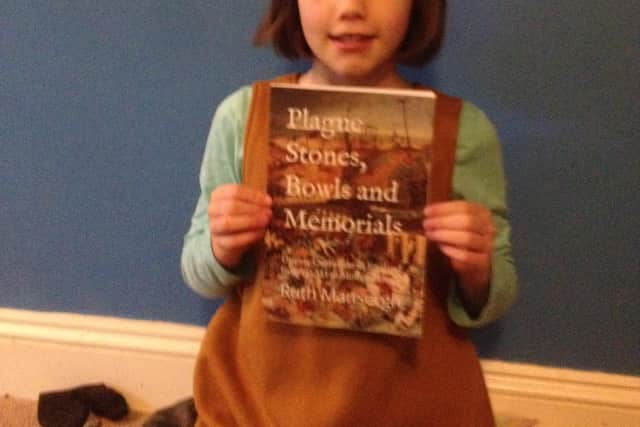Book tells the story of devastating diseases over the ages including cholera and Covid
and live on Freeview channel 276
Ruth went to school and university in Yorkshire where she studied English with Social History because of her interest in researching and writing about local history.
She has worked as a journalist since graduating, including ten years as a freelance teletext journalist, and 15 years as a sub-editor for publications including Financial Adviser and the Daily Mail.


Advertisement
Hide AdAdvertisement
Hide AdRuth explained: “I decided to work from home as a freelance writer/sub-editor because I have two children and commuting can prove complicated because of my disability, a form of intractable epilepsy that involves periods of confusion and subsequent exhaustion.”
Her main love is book writing and her newest self-published piece is called Plague Stones, Bowls and Memorials: Disease Outbreaks in England from 541 AD to Modern – a 139-page read which is available on Amazon.
She explained the book: “There is a tendency to think of the Black Death, which reached England in 1348, the Plague of London and the Spanish flu, which hit the UK in a series of waves, as being isolated events.
"However, there have been devastating infectious diseases through the ages, including English sweating sickness, the cholera epidemic, diphtheria, smallpox and Covid-19.


Advertisement
Hide AdAdvertisement
Hide Ad"Across the country, monoliths called plague stones are still in existence. They were erected outside established market areas showing where town and country people could trade with minimal risk of contamination.
"Stones were hollowed out to form a bowl, which would have been filled with vinegar to disinfect coins. And there are memorials to disease victims, such as the Sheffield cholera monument completed in 1835.”
FROM THE EDITOR
Thank you to all who support local journalism with a digital or print subscription to The Star. The events of 2020 mean trusted, local journalism is more reliant than ever on your support. We couldn't do it without you. Subscribe here www.thestar.co.uk/subscriptions so we can keep campaigning on your behalf. Stay safe.
Comment Guidelines
National World encourages reader discussion on our stories. User feedback, insights and back-and-forth exchanges add a rich layer of context to reporting. Please review our Community Guidelines before commenting.